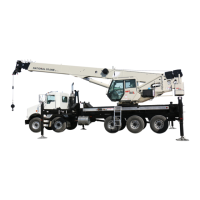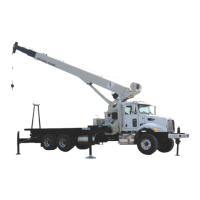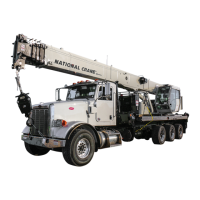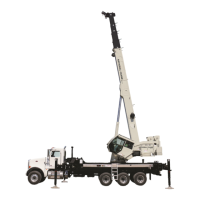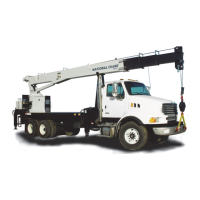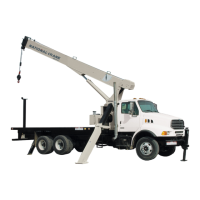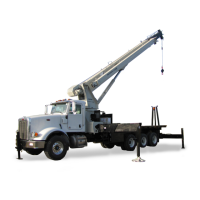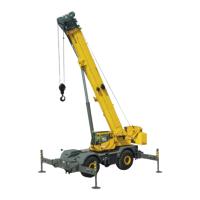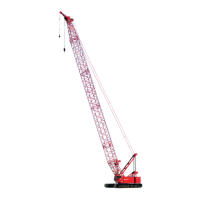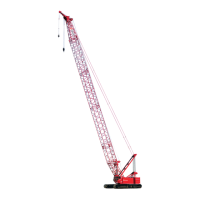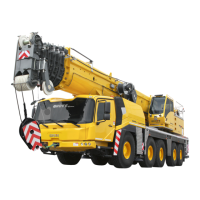CONTROLS AND OPERATING PROCEDURES OPERATOR MANUAL NBT60XL
3-36 Published 11-01-2020 Control # 710-00
CAMERA SYSTEM (OPTIONAL)
If equipped, the crane features two cameras:
• Hoist Camera—This camera (1, Figure 3-26) enables
the operator to view the during operation.
• Rear View Camera—This camera (2) enables the
operator to view in the rear of the crane, including the
counterweights, swing area, and outriggers that aren’t
visible from the cab. For more information about
adjusting the counterweights, see “Removable
Counterweights” on page 4-23.
The cameras are viewed in the cab on the camera monitor
(3). The operator can switch between cameras using the
monitor controls. For more information about the monitor,
see the manufacturer’s user manual.
WIND SPEED INDICATOR (OPTIONAL)
The cranes feature an optional wind speed indicator to
measure wind speed at the end of the boom. The wind speed
indicator features a radio anemometer assembly and a
wireless gateway router. The anemometer (1, Figure 3-27),
which captures wind speed data at the end of the boom or
jib, is battery powered and communicates wirelessly with the
gateway router (2) located in the crane cab. The gateway
router receives data from the anemometer and routes the
data to the RCL display. For information about how the wind
speed indicator appears in the RCL, see Table 7-3 on
page 7-4.
If using a jib, the anemometer assembly should be relocated
to the end of the jib to ensure accurate wind speed readings.
If not in use, the anemometer should be stored on the
storage rack in the operator cab.
In Operator Cab
FIGURE 3-26
9617
9618
9619
9620
1
2
3
Illustration for reference only.
Your crane may be different.
Fo
r
Reference
Only
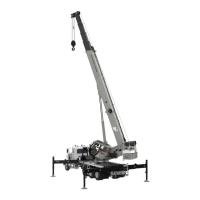
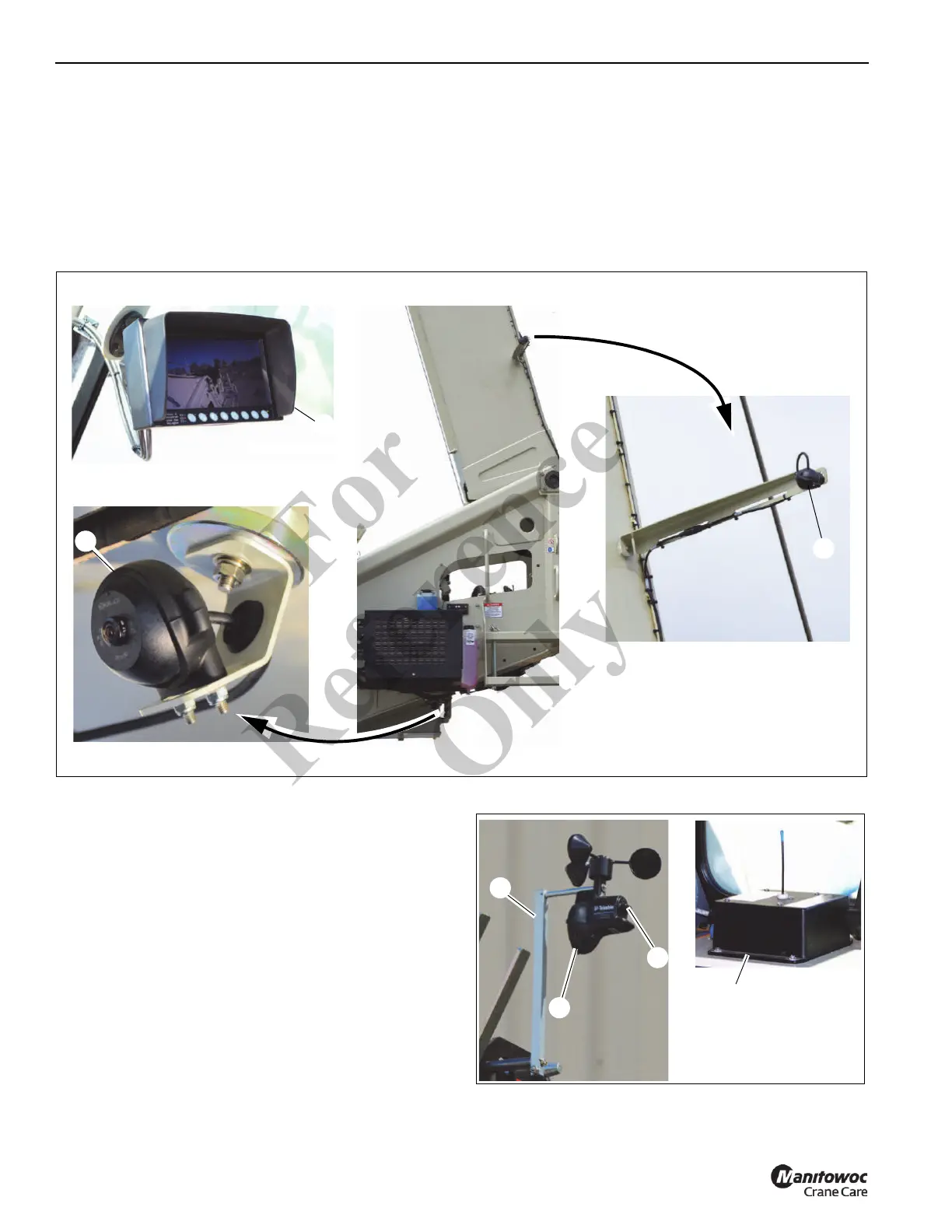